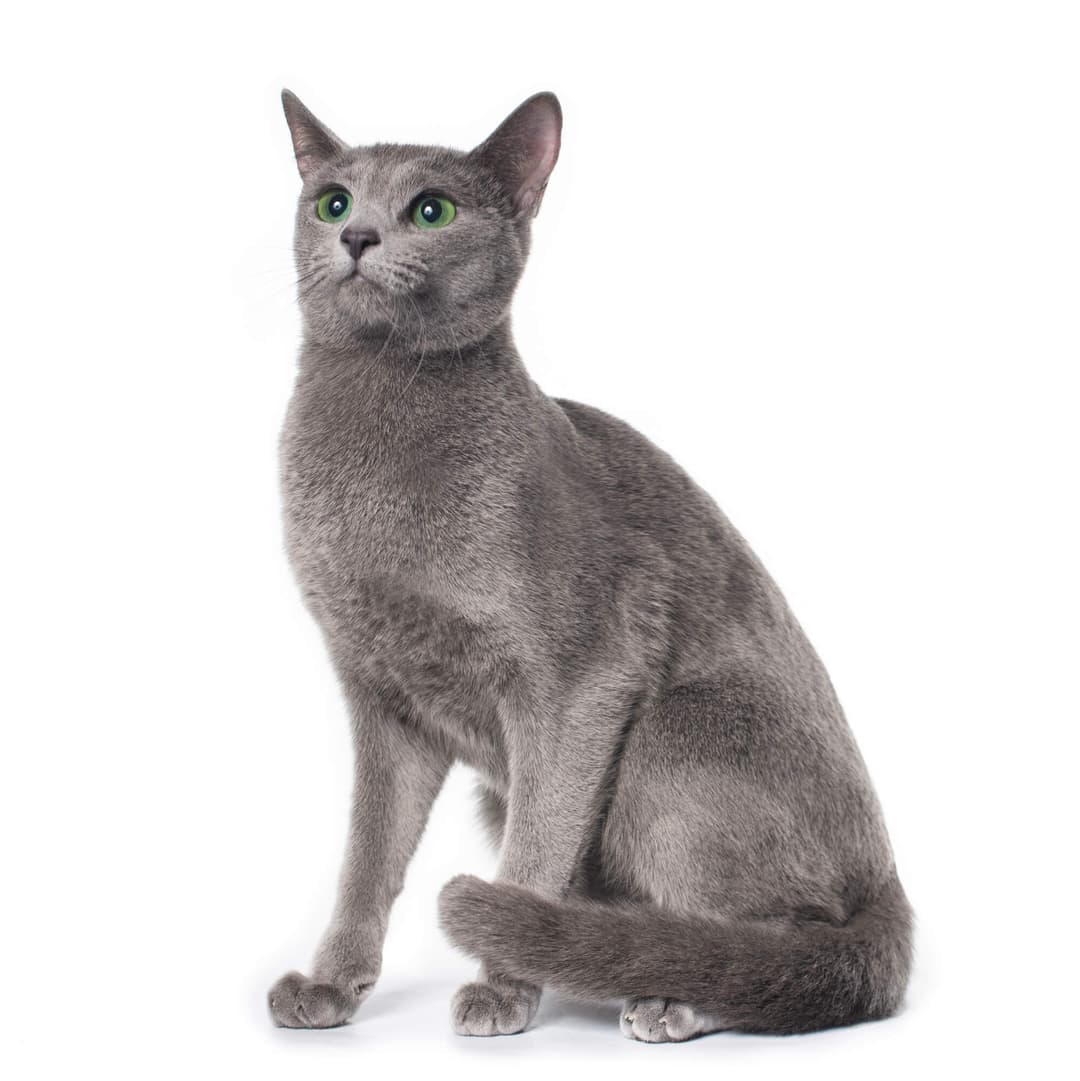Discover your cat's connection to this breed and 20 others


Discover your cat's connection to this breed and 20 others



Russian Blues are equal parts elegance and strength, with a friendly and sweet personality to tie it all together. These highly intelligent kitties love to engage with their pet parents every day and enjoy learning new tricks, like playing fetch!
Meet the "Doberman Pinscher" of cats. Russian Blues are powerful, agile cats, with a sweet-natured temperament who combine elegance and strength in their own unique way. The breed has a signature grayish-blue coat, broad head, and eyes that are a vivid green. Its beautiful coat shimmers due to the silver-tipped hairs of its short, plush fur.
The Russian Blue is a naturally occurring breed thought to have originated in Archangel, Russia. The breed was further refined in Great Britain and Scandinavia, where it may have been introduced by Russian sailors. The Russian Blues found in the U.S. today are a result of crossbreeding the British Russian Blue with the Scandinavian Russian Blue. Russian Whites, Blacks, and Tabbies were all created by crossing Russian Blues with domestic cats. The breed was also used, to an extent, in the development of the Havana Brown and in the refinement of the Nebelung breed.
Russian Blues are very curious, friendly, and social cats. They may at times seem shy or distant, but it doesn’t mean they want to be alone. They can become depressed or anxious if they feel neglected in any way. Blues are very loyal and loving and are said to be highly empathetic and sensitive to human emotions. Due to their high level of intelligence and sensitivity, they tend to remember favorite visitors even if the visits are infrequent.
These medium-sized cats have little to no predispositions to genetic diseases. However, they do love to eat! Though they are generally playful and energetic, it is important to encourage regular activity and provide a proper diet to help them maintain a healthy weight. Some published studies have recognized the Russian Blue, among several other breeds, to be at a higher risk for diabetes mellitus.
You can draw patterns on their shimmery coats. Because of their fur's thick and plush structure, one can draw patterns in their coats that will remain there until smoothed out.
They may be hypoallergenic.Cat allergies are caused by the proteins present in cat’s saliva and dandruff (Feld1, Feld2, Feld3, Feld4 and IgA). Among these, Feld1 and Feld4 are considered to be the two major cat allergens. It is thought that the Russian Blue cats produce lower levels of Feld1 than other breeds, which makes them better tolerated by humans who suffer from mild to moderate allergies.
They are often mixed up with other "blue" cats.Because of the coat resemblance, Russian Blues are often mixed up with British Blue and Chartreux breeds. Russian Blues have green eyes, however, while the Chartreux have orange eyes and British Blues have gold, copper or blue-green pigmented pupils. All three sport plushy, shimmery coats, but the Chartreux has a more wooly coat, and the British Blues have a smoother coat.
They are sought out as pets for their loving personalities. These cats can’t get enough of their humans, and are known for their sweet and affectionate nature.They are respected celebrity divas in the cat world. Two of the most famous Russian Blues include Tom of the historically popular cartoon Tom & Jerry and Felicity from Felidae. Russian Blues also appear in the movies Cats & Dogs, Two Lumps, and the Warriors book series.
Recommended by top vets with decades of experience
21 breeds
64 genetic health markers
50 genetic trait markers
